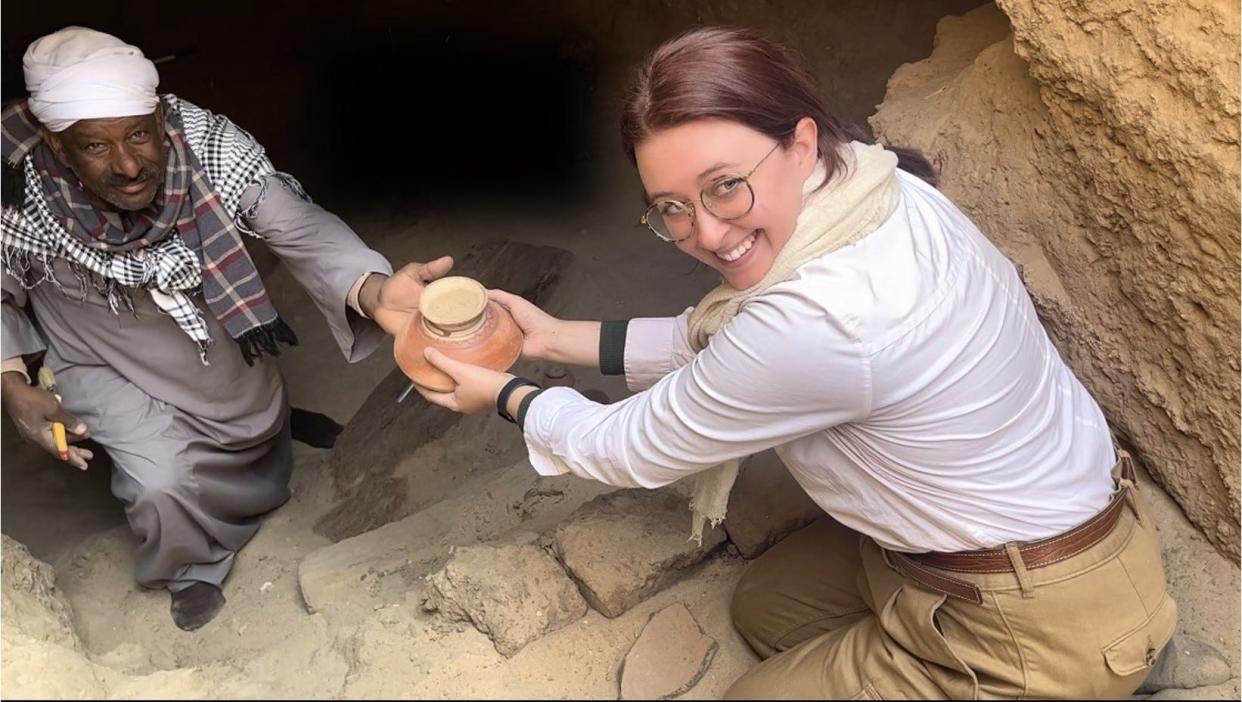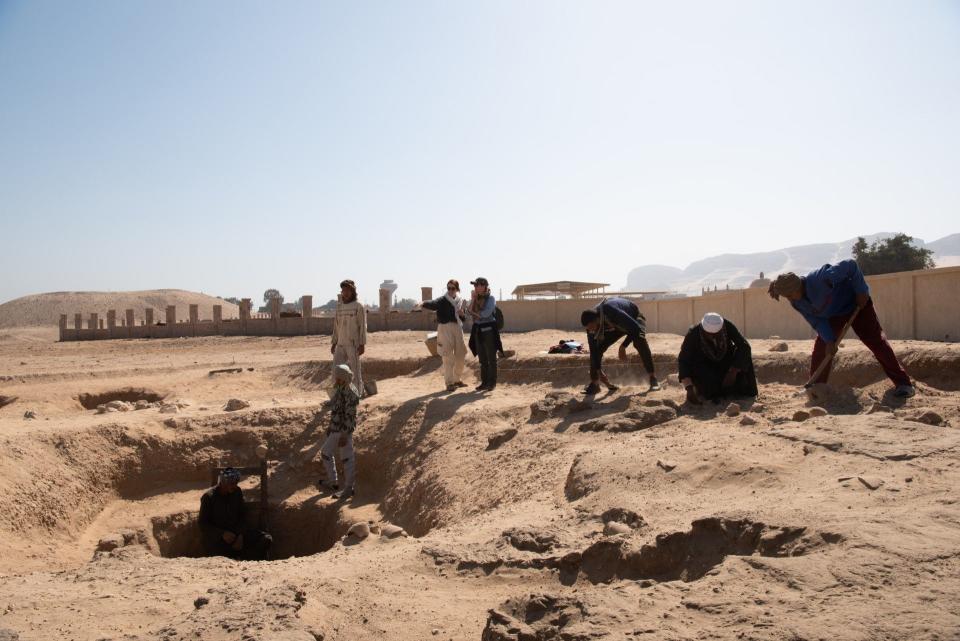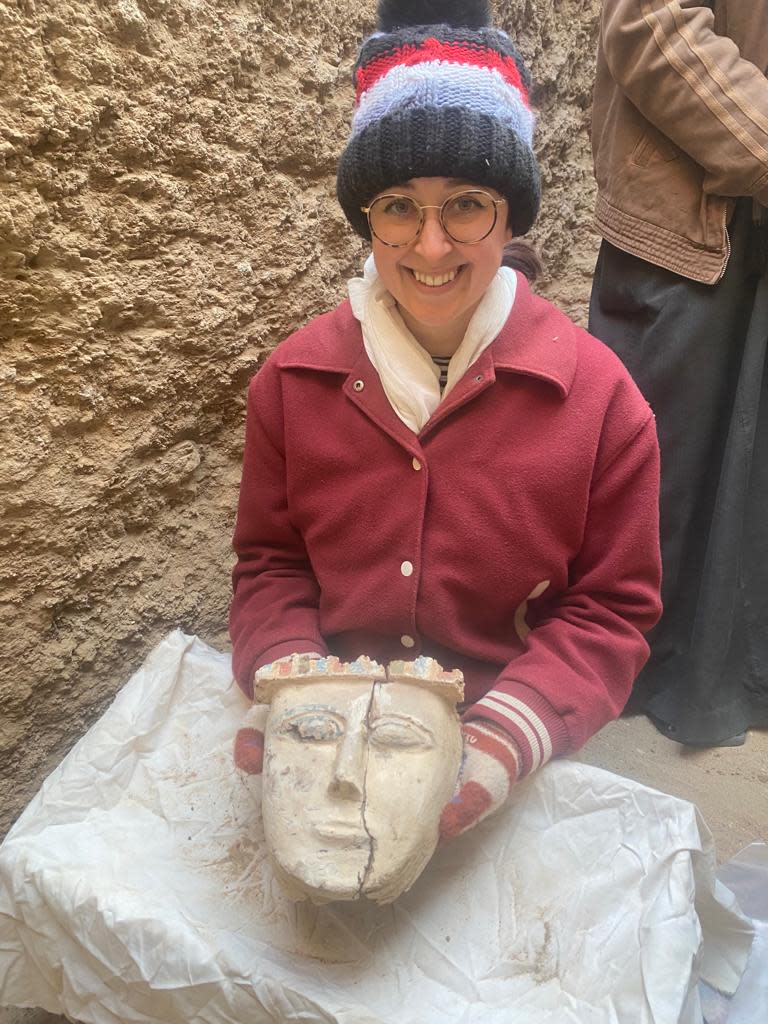Wall native discovers previously unknown ancient Egyptian cemetery

It wasn't long ago that Wall native Emily Smith-Sangster was excitedly flipping through the pages of National Geographic as a child and begging to go to the Egypt exhibit at Monmouth Museum. Now she's the one making the discoveries.
Since 2022, the egyptologist, archeologist, and PhD candidate has been working with Princeton University and the Ministry of Antiques in Egypt on an excavation in Abydos. Here, she along with her team made the discovery of a previously unknown cemetery that could fundamentally change our understanding of the time period from which it’s from.
“We had no idea that these burials were occurring at this site.” Smith-Sangster said. “That’s a really significant data point…for as much as we know, we still know very little.”
Smith-Sangster said that this cemetery appears to have only been used for about 100 years and then was never touched again, which is highly unordinary. While this research is still very fresh, Smith-Sangster has some ideas “floating around in her head” as to why it was seemingly abandoned.

“It may have had something to do with the fact that the King who put his pyramid there, Ahmose, was like the unifier of the New Kingdom," she said, in an interview with the Asbury Park Press. "So, he was the first king of the New Kingdom, and possibly it had something to do with, after the country was reunited, they shifted back to North Abydos. We're not really sure.”
The Abydos South Project or ASP (which Smith-Sangster said is named after the snake) was started in 2018 by inspectors for the Ministry. It was a solo Egyptian mission until 2022 when Princeton joined the project. This gave Smith-Sangster the opportunity to develop a dissertation based on the work that was being done there and to be a part of that work. She proposed her topic in March 2022, leaving it open-ended since she didn’t know what she would find during the excavation.
“My dissertation focuses on examining postmortem identity in Egypt.” Smith-Sangster said. “It was just going to be a focus on Upper Egypt and the new kingdom. But getting to do this excavation, I've kind of honed in on early New Kingdom, expression of identity at Abydos.”
Smith-Sangster was on site in Egypt excavating for six weeks, and despite the amount of work that her and the rest of the team has already accomplished, there is still much more to be done.
“We actually only excavated probably a tenth of the site.” Smith-Sangster said.
Smith-Sangster is back home now in New Jersey, but her work in Egypt doesn’t stop. Moving forward, Smith-Sangster has to process the information that she gathered in order to start drawing any conclusions. This includes finishing compiling all of the artifacts that were found into a database, separating the information by what tomb it was found in, and creating maps to understand who was buried by who. This then leading to her writing another chapter of her dissertation.

Smith-Sangster grew up in Wall Township, and after graduating from Wall High School. Before pursuing her PhD at Princeton, Smith-Sangster received her Bachelor’s degree in anthropology from Monmouth University, graduating with honors.
“It was really nice for me," she said. "I just really love New Jersey so it was nice to stay where I was familiar and then, later on, leave the state.”
From an early age, Smith-Sangster knew she wanted to be an Egyptologist, and studying locally helped her achieve that goal.
“[Monmouth University] has an amazing archaeology program.” Smith-Sangster said. “I actually got a lot of experience doing cultural resource management. While it wasn’t Egypt focused, it gave me those hard skills to be able to continue in the field.”
Smith-Sangster's fascination with Egypt can even be traced back to another local college.
“My parents took me to Brookdale Community College.” Smith-Sangster said. “They had the kids museum. I remember there being an Egypt section and me begging my parents to go like once a week.”
After graduating from Monmouth University, Smith-Sangster received her Masters in ancient near Eastern and Egyptian studies from New York University before returning to New Jersey to study Pharaonic period Egyptian art and archaeology with a focus on the New Kingdom at Princeton University. Sangster is the first Egyptologist through Princeton University.
“There’s a little bit of pressure there. A little bit of feeling like I need to prove myself,” Smith-Sangster said, “but it’s been really great. If I could do it again, I would definitely choose this again.”
While she’s focused on her dissertation right now, Smith-Sangster's plans for the future are big, including both releasing a book in the coming years and one day teaching to others who share her same passion for Egypt and archaeology.
“Hopefully I will defend [my dissertation] May of 2025,” Smith-Sangster said, “that is the current goal. After that, I’ll work on a book.”
There’s still a lot of work that both Smith-Sangster and the rest of the research team need to do with their discovery, but Smith-Sangster looks forward to continuing the work and getting back into the field when she can.
“I want to thank the Ministry,” Smith-Sangster said, “I couldn’t possibly do it without the support of the Ministry of Antiquities. I want to thank them for all their support.”
This article originally appeared on Asbury Park Press: Princeton student, Wall native, discovers ancient Egyptian cemetery

